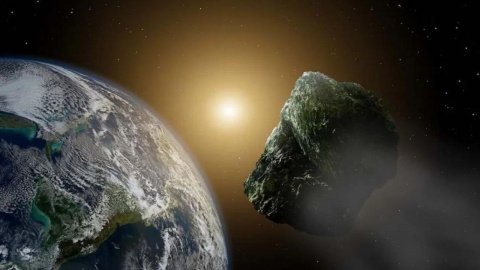On Valentine’s Day, an asteroid named 2024 BR4 is set to come near Earth at an incredibly close range. This asteroid, comparable in size to a building and measuring 140–310 meters in diameter, will pass by Earth at a proximity of 4.6 million kilometers, which is less than twelve times the distance from the Moon.
Asteroid BR4 to Pass the Earth’s Surface
In the vast expanse of the cosmos, a celestial marvel has recently graced our skies, captivating astronomers and igniting the imaginations of stargazers worldwide. Discovered by the vigilant eyes of the Catalina Sky Survey on January 30, this agile wanderer hails from the Apollos group of asteroids, standing out for its celestial ballet that intersects with Earth’s orbit. In a mesmerizing display of cosmic choreography, a Celestron robotic unit skillfully captured this enigmatic voyager in a 120-second exposure photograph, contributing to the globally-renowned Virtual Telescope Project.
This snapshot not only freezes a moment in the celestial dance but also offers a glimpse into the mysteries that surround us. The ethereal image, a testament to human ingenuity and technological prowess, beckons us to contemplate the cosmic symphony that unfolds above. As we marvel at this swift celestial object, we are reminded of the interconnectedness of our planet with the cosmic tapestry, fostering a sense of wonder and humility in the face of the vast and infinite universe that stretches beyond the confines of our earthly home.

In the grand symphony of the cosmos, 2024 BR4 emerges as a celestial luminary, captivating our collective gaze as it pirouettes through the celestial stage. Positioned at a distance of approximately 12 million kilometers from Earth, this enigmatic voyager becomes a focal point in the narrative of our cosmic neighborhood, its presence a testament to the intricate dance of celestial bodies. With each passing moment, it inches closer to our terrestrial home, a mesmerizing spectacle that commands our attention and ignites our imagination.
As we contemplate the majesty of 2024 BR4, we are reminded of the profound interconnectedness that binds us to the vast expanse of the universe. Its journey, meticulously choreographed by the cosmos itself, serves as a poignant reminder of our place in the cosmic tapestry. In its celestial odyssey, we find echoes of our own quest for understanding, a relentless pursuit of knowledge that transcends the boundaries of time and space. As this celestial wanderer continues its inexorable journey, it beckons us to gaze upwards, to marvel at the wonders that lie beyond, and to embrace the boundless possibilities that await us in the infinite expanse of the cosmos.
The awe-inspiring intricacies of its interstellar journey are vividly unveiled through the lens of the Celestron C14+Paramount ME+SBIG ST8-XME robotic unit, a technological marvel that transforms the night sky into a canvas of ethereal beauty. This remarkable feat of imaging not only captures the celestial ballet of 2024 BR4 but also serves as a testament to the collaborative spirit of global astronomical initiatives, exemplified by the Virtual Telescope Project.

As the world unites in the pursuit of unraveling the mysteries of the cosmos, this photographic masterpiece embodies the synergy between cutting-edge technology and the relentless curiosity that fuels humanity’s exploration of the cosmos. The celestial choreography of 2024 BR4, immortalized in pixels and bytes, invites us to marvel at the boundless wonders that unfold beyond our earthly confines, fostering a profound appreciation for the intricate dance of celestial bodies in the vast theater of space.
As the asteroid nears its closest point at a distance of 4.6 million kilometers, which is approximately 12 times the average distance between the Earth and the Moon, experts assure that there is no cause for alarm. NASA, through its diligent monitoring of more than 33,000 near-Earth objects, has confirmed that the likelihood of a substantial impact on our planet remains minimal in the foreseeable future.
As the asteroid approaches its closest point at a distance of 4.6 million kilometers, which is roughly 12 times the average distance to the Moon, experts have provided reassurance that there is no cause for alarm. NASA, through its meticulous surveillance of more than 33,000 near-Earth objects, has affirmed that the chances of a significant impact on our planet are highly unlikely in the foreseeable future.
